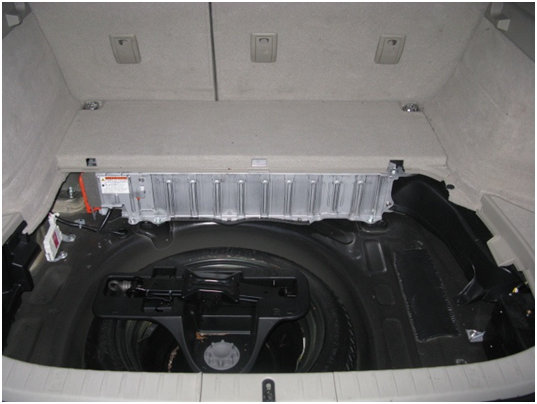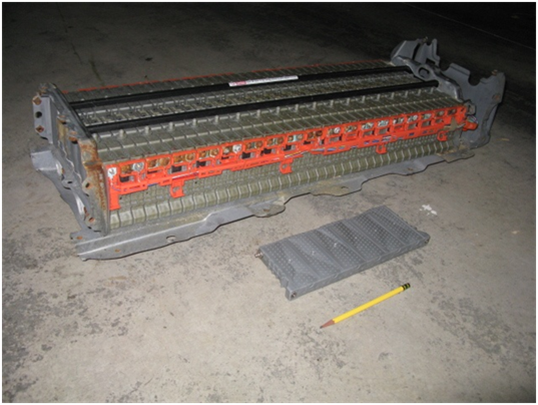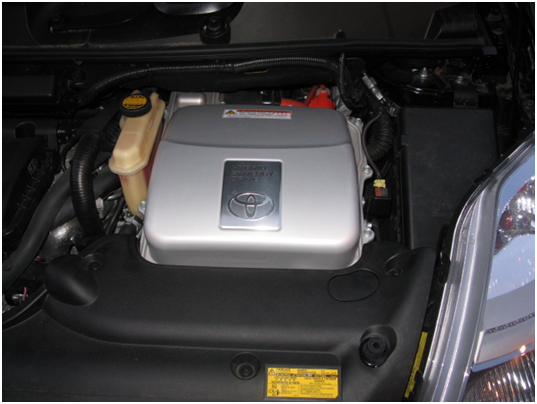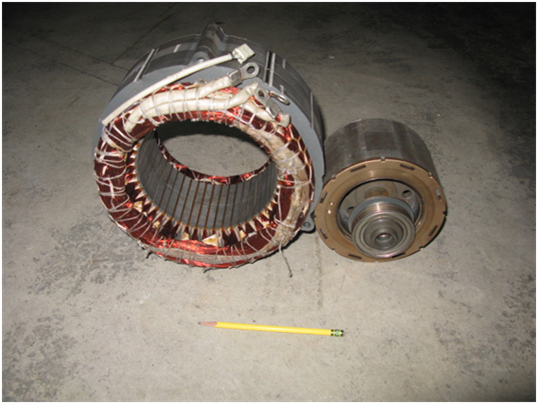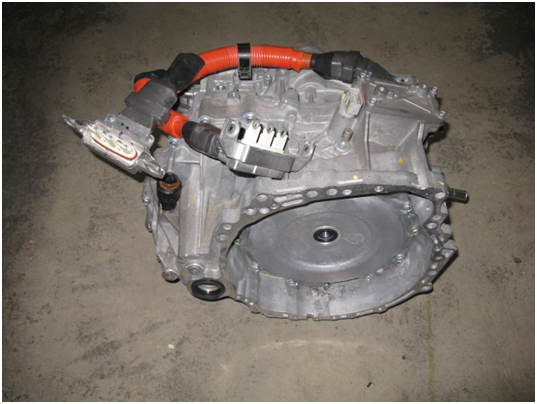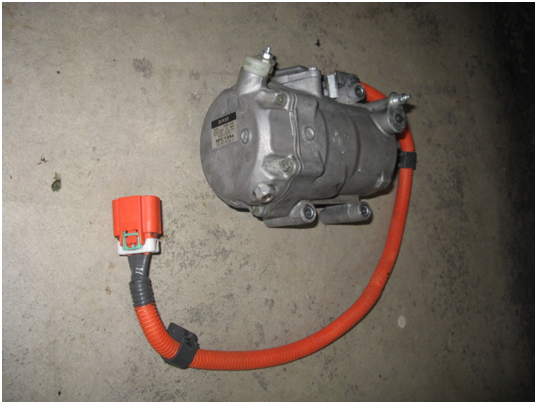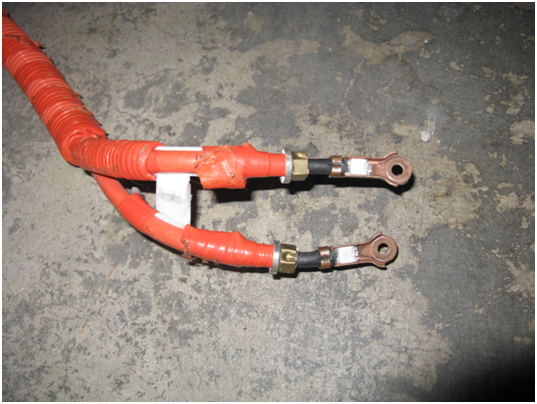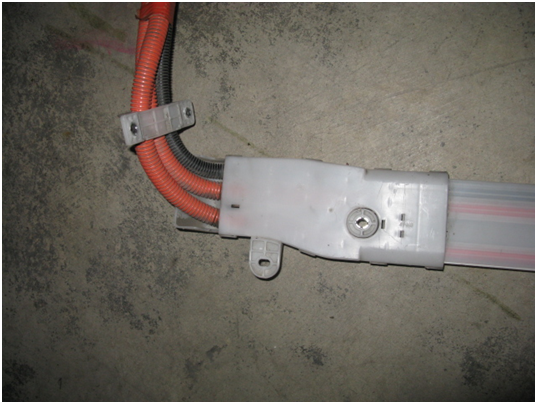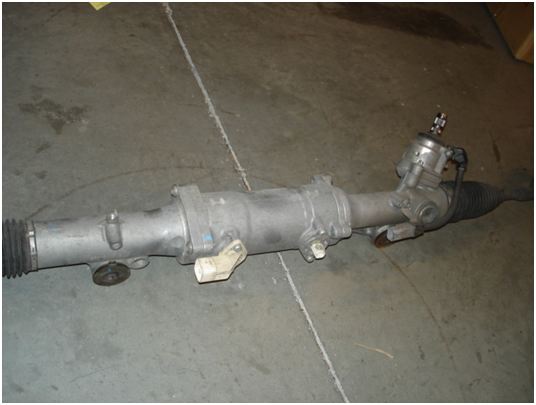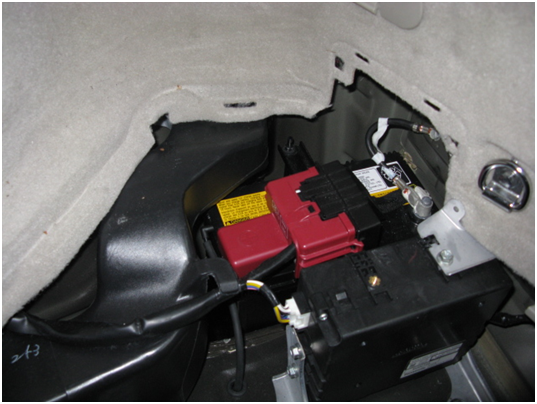
Vehicle Electrical Circuits
September 2nd, 2010
Categories
By Paul Bindon & Matt Stroud
Modern Hybrid vehicles contain a wide array of technologies. Trying to understand the hazards associated with these systems is essential for first responders. What are the major components to consider during your approach and extrication, and where are they located? This article will be a review of some of the systems you may encounter when responding to a MVA involving a Hybrid vehicle.
Vehicles are manufactured following strict standards for safety in design. High voltage components are required to be insulated from the body of the vehicle to a very high degree. There is however, no absolute guarantee that there is not a hazard to you, as a first responder, when the vehicle has been altered in an MVA.
High Voltage Battery Pack -
All batteries are part of a direct current or DC circuit. Consisting of many cells with lower voltages, they are connected in series to produce voltages ranging from 100V in Honda systems to 800V on Hybrid commuter buses. Battery cells contain a gel type electrolyte suspended between metal plates which do not pose a spill hazard. Most current models are equipped with NiMH (nickel-metal hydride) batteries, the same technology your power tools at home use. You may have noticed the battery for your drill will run normally and then suddenly die. Vehicle batteries obviously cannot operate the same way because stranded motorists are not good for sales. To prevent this, the state of charge of a Hybrid vehicle battery is maintained by a computer that does not allow the battery to either completely charge or completely discharge. The vehicle uses braking energy or the engine to maintain battery charge levels, allowing prolonged battery life. One common misconception is that the high voltage battery will have to be replaced after a period of time. In reality, the batteries are designed to last the life of the vehicle. Hybrids in commercial use, such as taxi cabs, have been driving for 200,000 to 300,000 miles on the original battery without failure.
Lithium Ion batteries are emerging as the next generation of battery technology. They allow much longer use before becoming discharged, thereby increasing the fuel economy of Hybrid vehicles. While the name of the battery uses the word lithium, they actually do not contain lithium metal. As with all rechargeable NiMH or lithium type batteries, they do not require a class D extinguishing agent in the event of fire. Large amounts of water would be an acceptable extinguishing agent for any of the Hybrid battery types produced to date.
Examples of a Prius High Voltage Battery
(Note location of battery under floor, behind rear seat)
Inverter/ Converter -
The inverter/converter is the computer control or brain of the Hybrid system. Located in the engine compartment, on top of or near the traction motor, it converts DC battery voltage to higher voltages for use by the traction motor. Up to 650V can be found inside the inverter/converter. It is also the charging system for the high voltage and 12V batteries. Because the inverter/converter is located in the engine compartment, cutting or removing during extrication is not necessary.
Traction Motor -
All true Hybrids contain a traction motor(s) that drive or assist in driving the wheels. These motors are also used as generators to recapture braking energy and charge the high voltage battery. Traction motors can contain up to 650V AC when in operation. They are located between the engine and transmission as an assist motor (Honda, Mercedes) or within what would normally be the transmission (Toyota, Lexus and other manufacturers).
Air Conditioning Compressor –
Since the Hybrid vehicle’s engine does not run at all times, a conventional air conditioning compressor utilizing a drive belt and pulleys cannot be used. The electric air conditioning compressor is used when air conditioning is needed. System operation does not affect power available for driving, since it is not run by the gasoline engine. Electric power drawn from the high voltage battery is used to run the 300 volt motor.
High Voltage Orange Wires -
All wiring used in automotive applications that may contain over 60 volts DC or 30 volts AC is colored orange. It could be 60V or 800V, the wiring color is the same. This simply means that it may contain enough voltage to be a lethal hazard to you as a first responder. These wires run from the high voltage battery, under the vehicle in protective sheathing, forward to the inverter/converter in the engine compartment. They also run from the inverter/converter to the traction motor and to the air conditioning compressor. Since they do not run inside the passenger area, they should not be encountered during most extrication procedures.
Mid Voltage Systems -
Electric power steering systems became necessary since, in a Hybrid vehicle, the gasoline engine is not always running. Conventional power steering systems, which are run by belts and pressurized fluids, were no longer an option. Electronic power steering systems run on 40V to 50V DC (below 60V), therefore they do not require orange wiring. A dull yellow wiring color for this system signifies less than lethal voltages.
Mild Hybrids or mid voltage Hybrids do not contain a traction motor that drives or assists in driving the wheels. Mid voltage battery packs (36V-42V) are only used to provide enough power to start and stop the engine when coasting, or for a brief period of time at a stop light. This strategy yields a mild increase in fuel economy. They were however marketed as Hybrids and have led to some confusion regarding the difference in wire color. Blue wiring has been used with these systems to signify mid voltages. Although they do not contain enough voltage to be a lethal hazard, increased arc hazards should be noted when dealing with these vehicles.
Low Voltage Systems -
It is important to remember that all Hybrids have a conventional 12V battery that powers all accessory systems such as power windows, radio, SRS etc. The 12V battery is required to power the computer, which closes the relays connecting the high voltage battery to the rest of the system. If the 12V battery is taken off line (disconnected by cutting the negative battery cable) the high voltage system cannot restart. Remembering that the 12V battery is the key to disabling vehicle systems will aid in quickly stabilizing vehicles for patient extrication procedures.
Conventional vehicle braking systems rely on engine vacuum or hydraulic pressure to provide power assistance. This system was also redesigned for Hybrid vehicles. Electric/hydraulic brake systems are now used, allowing operation when the engine stops running. Computer controls regulate the amount of power generated for the battery based on how much braking is required. A separate system is used to simulate the conventional feel of power brakes we have become used to. These systems contain a 12V backup power supply in case of failure.
This review of the major electrical components of modern vehicles has been intended to help first responders familiarize themselves with the potential hazards involved in patient extrication. Knowing what these components are, what they do and where they are located can take some of the mystery out of modern vehicle technology.
